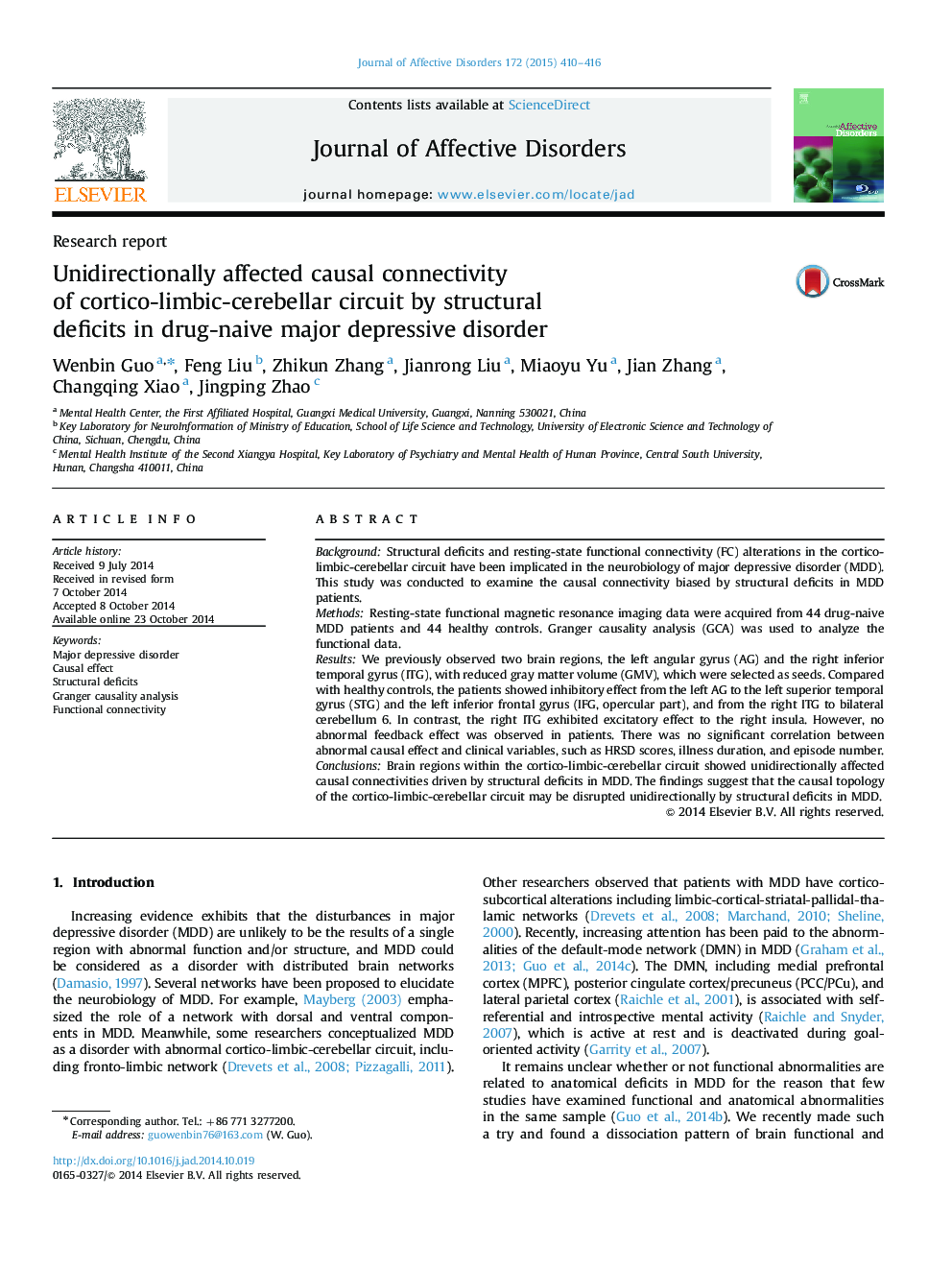| Article ID | Journal | Published Year | Pages | File Type |
|---|---|---|---|---|
| 6232342 | Journal of Affective Disorders | 2015 | 7 Pages |
BackgroundStructural deficits and resting-state functional connectivity (FC) alterations in the cortico-limbic-cerebellar circuit have been implicated in the neurobiology of major depressive disorder (MDD). This study was conducted to examine the causal connectivity biased by structural deficits in MDD patients.MethodsResting-state functional magnetic resonance imaging data were acquired from 44 drug-naive MDD patients and 44 healthy controls. Granger causality analysis (GCA) was used to analyze the functional data.ResultsWe previously observed two brain regions, the left angular gyrus (AG) and the right inferior temporal gyrus (ITG), with reduced gray matter volume (GMV), which were selected as seeds. Compared with healthy controls, the patients showed inhibitory effect from the left AG to the left superior temporal gyrus (STG) and the left inferior frontal gyrus (IFG, opercular part), and from the right ITG to bilateral cerebellum 6. In contrast, the right ITG exhibited excitatory effect to the right insula. However, no abnormal feedback effect was observed in patients. There was no significant correlation between abnormal causal effect and clinical variables, such as HRSD scores, illness duration, and episode number.ConclusionsBrain regions within the cortico-limbic-cerebellar circuit showed unidirectionally affected causal connectivities driven by structural deficits in MDD. The findings suggest that the causal topology of the cortico-limbic-cerebellar circuit may be disrupted unidirectionally by structural deficits in MDD.
